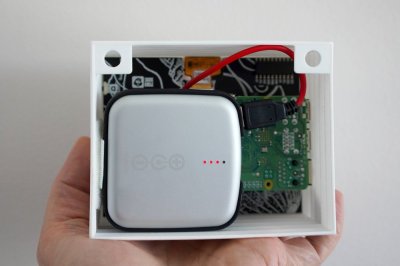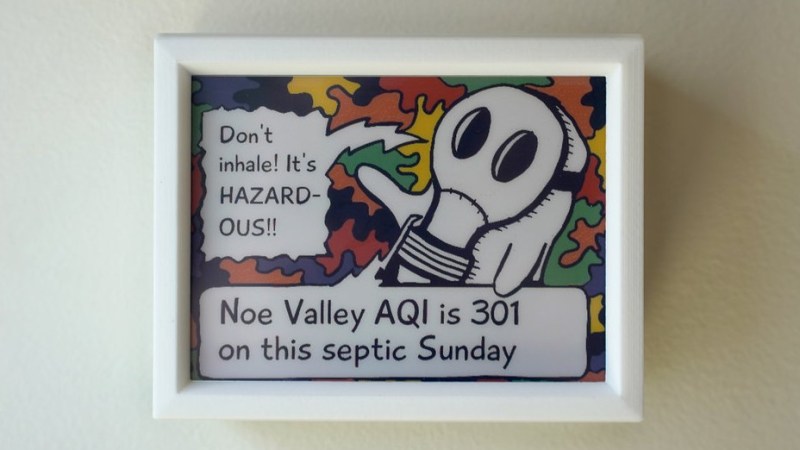Air Quality Index for one’s region can be a handy thing to know, but it’s such a dry and humorless number, isn’t it? Well, all that changes with [Andrew Kleindolph]’s AQI Funnies: a visual representation of live AQI data presented by a friendly ghost character in a comic panel presentation. The background, mood, and messaging are all generated to match the current conditions, providing some variety (and random adjectives) to spruce things up.
 We love the attention paid to the super clean presentation, and the e-paper screen looks fantastic. Inside the unit is a Raspberry Pi using Python to talk to the AirNow.gov API to get local conditions and update every four hours (AirNow also has a number of useful-looking widgets, for those interested.)
We love the attention paid to the super clean presentation, and the e-paper screen looks fantastic. Inside the unit is a Raspberry Pi using Python to talk to the AirNow.gov API to get local conditions and update every four hours (AirNow also has a number of useful-looking widgets, for those interested.)
The enclosure is 3D printed, and [Andrew] uses a Witty Pi for power management and battery conservation. The display is a color e-paper display that not only looks great, but has the advantage of not needing power unless the display is updating. The Pi can be woken up to update the screen with new info when needed, but otherwise can spend its time asleep.
[Andrew] has a knack for friendly presentations of information with an underlying seriousness, as we saw with his friendly reminders about nasty product recalls.
















screens are out of stock right now. :-(
That one is definitely gorgeous. I’d definitely want one if AQI data were outside of the US (short of a few neighbor country and embassies)…
TL;DR:
There is a private global-ish network with an API you could use instead: https://map.purpleair.com/
The official AirNow.gov numbers are not always that good depending on where you live anyway. They have only a few sensors and while they incorporate private ones, they weigh their data in a way that there are places where you have clearly unhealthy air (as in the sun is only a small red dot in the sky due to wildfire smoke) and the AQI still showing as good.
There is a company Purple Air (not affiliated to them) and they produce sensors that are pretty good (according to EPA they err on the side of worse than actual quality. But that can be accounted for) and widespread on the globe. Plus, they do have an API you can use. All you need to do is send them an email and ask for an API key.
I have resorted to only use their data for my automations like pausing the fresh air system if the outdoor air is of low quality. And I actually decided the only way to make things better is to purchase one of their sensors and add more data into their system (but they are not cheap).
Anyone find code or instructions? Doesn’t seem to be open sourced